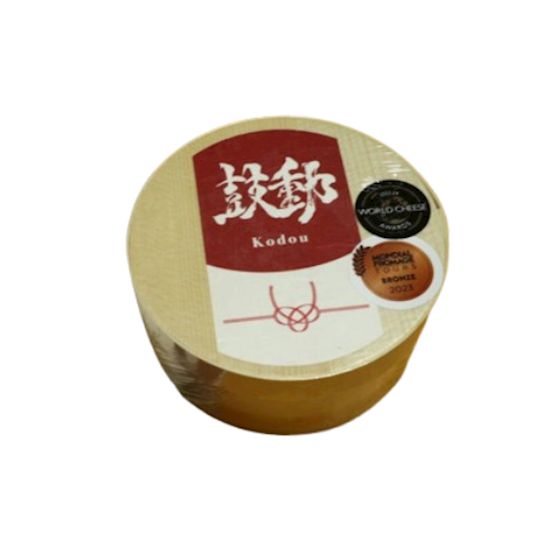Otaki
Japan
What to eat in Otaki?

Most popular regional dishes
Nigiri
Nigiri or nigirizushi is a special kind of hand-pressed sushi where the meat is sliced and pressed on top of sushi rice. It was developed in Tokyo (then called Edo) during the 1800s. Sometimes, nori seaweed is used to wrap the whole concoction and keep it together. The topping is usually seafood ... Read more
Gyūdon
Gyūdon is one of the most popular and inexpensive fast food dishes in Japan. Its name can be literally translated to beef bowl. The dish consists of beef and onions served over a bowl of rice. Beef and onions are cooked in a combination of mirin, sugar, sake, and soy sauce, imparting a s... Read more
Oyakodon
Oyakodon is a poetically named dish meaning father and child, referring to the fact that both the chicken and the egg are used in the dish. It consists of a bowl of white rice that is topped with chicken, eggs, and chopped scallions. The eggs are poured over the rice before they have com... Read more
Tsukemen
Tsukemen is a noodle dish from Japan that is eaten in a unique way. Cold noodles are dipped in the accompanying soup, broth, or sauce, which are served hot in a separate bowl. The noodles can also be dipped in vinegar or spiced up with chili sauce before consumption. Unlike ramen, where ... Read more
Shoyu ramen
The soy sauce based shoyu ramen is one of the four major groups of ramen - noodle dishes praised for their exquisite flavors. Noodles, broth, and various toppings are the three essential elements in every bowl of ramen. The dark and salty soup is what distinguishes shoyu from other varieties. It ... Read more
Okoshi
Kaminari-okoshi, often called merely okoshi, is a popular Japanese confectionery, similar to rice crispy treats. The main ingredient in okoshi is expanded rice, created by roasting rice grains until they pop. A mix of sugar and butter or corn syrup is used to hold the rice together, and ... Read more
Taiyaki
Taiyaki is a Japanese fish-shaped cake that is often consumed as a snack, made from flour and filled with azuki sweet bean paste. It is usually served warm and is often found at most taiyaki stands at any winter festival in Japan. Most people believe that this sweet treat originated in Tokyo duri... Read more
Monjayaki
A specialty of the Japanese Kantō region known as monjayaki is pan-fried batter, a type of pancake consisting of wheat flour (komugiko) and fish broth (dashi). The pancake is mixed with cabbage, seasonings, and other ingredients, cooked until it is crispy on the bottom and parti... Read more
Gunkanmaki
Gunkanmaki is a sushi variety that consists of sushi rice that is formed into an oval shape and is then wrapped with nori seaweed. The piece is finished off with a topping that traditionally includes fish roe such as ikura (salmon), kazunoko (salted herring), or uni... Read more
Anpan
The round, golden brown anpan is a popular Japanese pastry which consists of a wheat bun that is usually filled with sweetened red bean paste. Traditionally garnished with poppy or black sesame seeds, anpan is a delightful combination of the sweet filling, soft interior, and a crispy crust. This ... Read more
Yokohama-Style Ramen
Yokohama-style ramen or iekei ramen is a Japanese type of ramen originating from the Yokohama area and dating back to 1974. The dish consists of thick noodles and a stock that's a mix of creamy tonkotsu (pork broth) and soy sauce. The toppings include chashu pork, chopped seaweed, leeks,... Read more
Chankonabe
A highly caloric staple of the sumo wrestlers' diet, chankonabe is a rich stew consisting of dashi, sake, chicken or fish, and vegetables such as daikon and bok choy, although the dish has no fixed recipe and usually contains readily available ingredients that are full of protein. The dish is oft... Read more
Most popular regional products
Ramen Noodles
Ramen are traditional Japanese noodles used in dishes such as tonkotsu ramen, curry ramen, shio ramen, and miso ramen, among others. The noodles are based on wheat flour, water, salt, and alkaline water known as kansui, which gives ramen its distinctive slippery and glossy quality. Prior to rolli... Read more
Kewpie Mayonnaise
Kewpie is a popular brand of mayonnaise originating from Japan. Enjoyed since 1925, the mayonnaise is made with three main ingredients - oil, rice or apple vinegar, and egg yolks. No sugar or salt is added to the mayonnaise, and it’s bottled in easy-to-squeeze containers. The flavor is frui... Read more
Kanpyō
Kanpyō refers to dried shavings of calabash gourd. Originally, it was grown in the Osaka area, but now it's a specialty of Tochigi Prefecture. These gourd shavings are usually used as an ingredient in sushi, stewed nimono, and marinated aemono foods. When it's used for sushi, kanpyō is b... Read more
Himokawa
Himokawa udon are traditional Japanese noodles. They're a specialty from the Kiryu area in Gunma Prefecture. These noodles are instantly recognizable because they're very wide – most of them are over 10cm in width (pretty wide when compared with regular udon's 4mm thickness). Despi... Read more
Kusaya
Kusaya is a Japanese fish delicacy made by brining, fermenting, and sun-drying mackerel or flying fish. The preparation of this specialty is a centuries-old tradition that is believed to hail from the Japanese region of Kanto, dating back to the Edo period. To make kusaya, gutted and cle... Read more
Edosaki kabocha
Edosaki kabocha is a pumpkin variety originating from Japan's Ibaraki Prefecture. The pumpkin is sweet in flavor and the texture is soft, powdery, and flaky on the palate, reminiscent of boiled potatoes. The sugar content is well balanced. These pumpkins are usually harvested before they're compl... Read more
Carrot Udon (Niiza ninjin udon)
Niiza ninjin udon is a unique variety of Japanese udon noodles, originating from Niiza, Saitama. Produced since 2002, the noodles are made with wheat flour and carrots. They are characterized by a vivid orange color. The texture is smooth and elastic, just like regular udon noodles, while the aro... Read more
Most popular regional drinks
Kamikaze
Although some claim that it originated during the 1970s as a classic disco cocktail, the elegant Kamikaze cocktail was probably invented in Tokyo after World War II, during the American occupation of Japan. Kamikaze, which means divine wind in Japanese, is made with equal parts ... Read more
Bamboo
Bamboo is a vintage sherry-based cocktail featured in several classic cocktail books. The recipes vary in ratio, but they mainly include equal parts dry vermouth and sherry, typically fino or oloroso, and a dash of bitters. Apart from the standard version, this cocktail is sometimes alte... Read more


